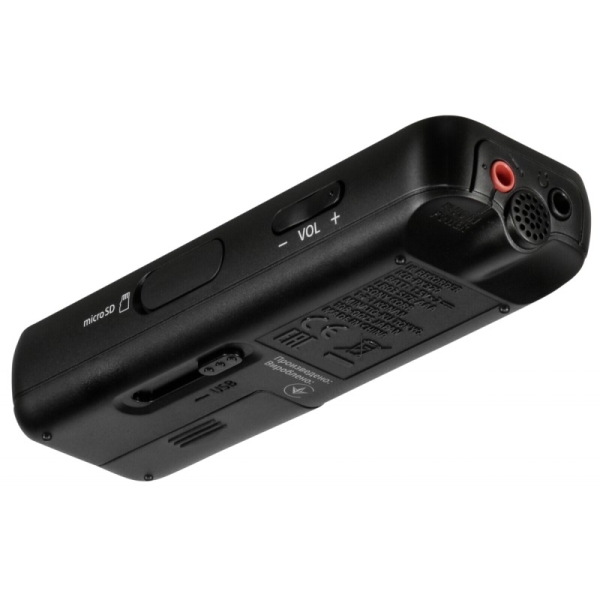

It holds your place in one folder while you visit the next. You can also jump between folders with little effort, which is nice. This model is set up so you can use separate folders and book mark them with a specific category or place so you know whose interview is whose. This is handy for me because of all the oral history interviews I do. It also has longer battery life at about 59 hours. As mentioned before, the biggest and best change with the newest PX370 model and the PX470 (stereo input) is the built-in USB. It has over 1,000 hours of recording time with 4GB of memory and requires 2AAA batteries, which are supplied with Voice Recorder Review: Sony ICD-PX370 If you’re looking for pure voice recording with ample minutes, the Sony fills the bill. It’s a tiny bit more compact and doesn’t have as many bells as whistles – which isn’t always a bad thing for oral history interviewing.

My first recorder, the Olympus WS-852 (and the newest model, the Olympus WS-853) also has my heart, but I can see some great functionality with the Sony. Regarding this new model, I like the simplicity and the sound quality the best. Anyway, this Voice Recorder Review: Sony ICD-PX370 (mon0) and Sony ICD-PX470 (stereo) is helpful to you. I have been learning as I go and am so impressed with the technology of the latest and greatest digital recorders for around $50. The new model has it, which is a huge upgrade. The previous model, the ICD-PX 333 worked well but was lacking a major feature – the built in USB. One recorder I have been using is the older version of the Sony ICD-PX370 (mono sound input) and the Sony ICD-PX470 (stereo input).
#Sony digital voice recorder icdpx370 professional#
I just started using digital recorders quite regularly about two year ago when I made the transition from a journalist to a professional life story interviewer and writer.


 0 kommentar(er)
0 kommentar(er)
